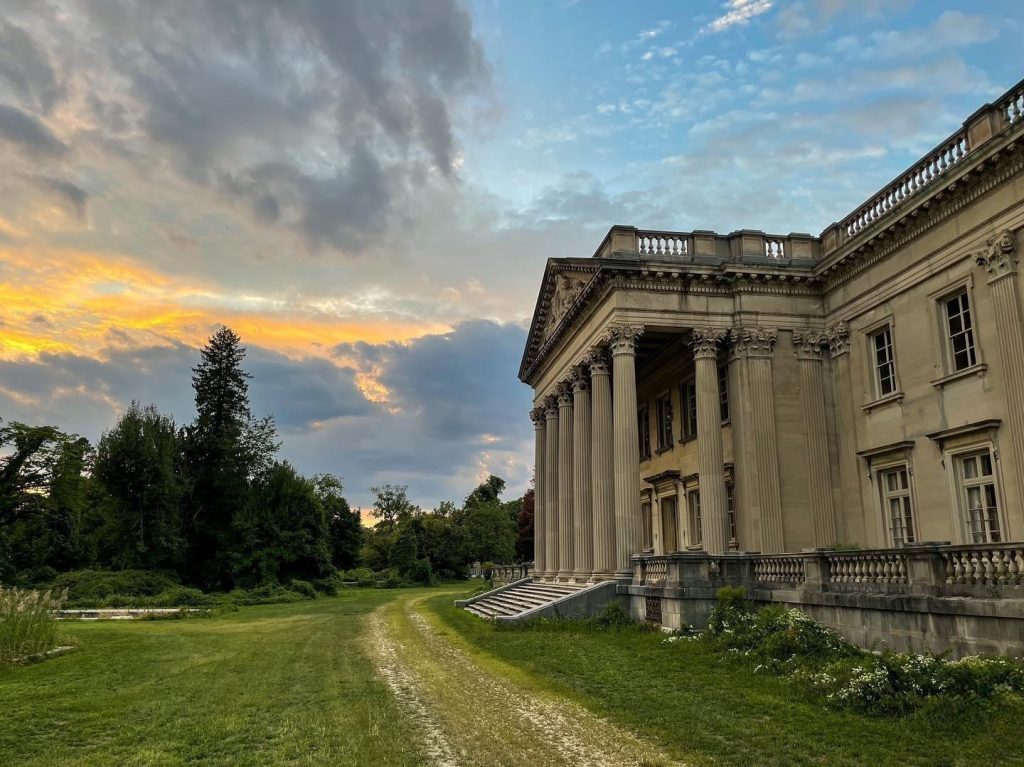Table of Contents
It is Lynnewood Hall. Although they start to seem overused, the only ways to describe Lynnewood Hall in Elkins Park and its founder are with superlatives. It has 110 rooms and is the largest remaining palace from the Gilded Age in the Philadelphia area.



It took a while for Lynnewood Hall, which was located just outside of Philadelphia, to meet a horrible end.
480 acres of land originally supported Lynnewood Hall is now regarded as one of the Philadelphia region’s largest remaining Gilded Age houses. Although the abandoned home is off-limits to the general public, this is your chance to enter this dilapidated piece of history.
The estate of Peter A. B. Widener, who owned more Rembrandts than any other private collector save Buckingham Palace, was constructed between 1897 and 1899.

Widener had amassed wealth across a number of sectors. The American Tobacco Company and U.S. Steel were both co-founded by him after starting out in streetcar transportation.
The manor served two objectives for him. He wanted to keep his sons and their families close by and to remain in one house after his wife passed away. He also needs a lot of room to display his enormous collection of artwork.
Lynnewood Hall Mansion Address
This heritage is located on 920 Spring Avenue, Elkins Park, Montgomery County, Pennsylvania.
Why was Lynnewood was Abandoned
Both of Joseph’s children declined to take on the enormous burden of running Lynnewood Hall after his death in 1943. The old house was abandoned and immediately started to deteriorate. The home may still be owned by the Widener family today if it weren’t for the Titanic, but in 1948, a developer paid an extremely low price of just $130,000 (£92k) for the estate and its surrounding land.
The Sale of Lynnewood Hall Mansion
The church ultimately decided to list the mansion for sale due to the high expense of restoration. Even when offers were received that were significantly higher than the asking price, the church refused to sell the land. Lynnewood Hall is currently privately owned, unoccupied, and off the market.
Although it’s uncertain what will happen to Lynnewood Hall, we sincerely hope that it will someday be brought back to its former splendor.

Follow us on our Facebook
Lynnewood Hall Interior

Photos by Austin H.
Through the years, as you looked at the abandoned mansion through its worn-out gates, you let your imagination run wild, daydreaming about its regal interior during opulent parties and festivities, French tapestries, and practically unparalleled art collection.
Yes, even though the mansion’s outside is a long cry from what it once looked like, these pictures demonstrate that the interior is still breathtaking. We implore you to take a minute and carefully analyze each image. You will still be able to see many outstanding examples of the work produced by great craftsmen in earlier times, as well as the foundations of an estate that once had everything.
The ballroom today
IMAGE: LYNNEWOOD HALL PRESERVATION FOUNDATION /
@lynnewood_hall / Instagram
Tragedy On The Titanic


@lynnewood_hall / Instagram
George was revealed to have been one of the Titanic’s original investors. A ship that was so magnificent and “unsinkable” at the time seemed like a wise investment. And George and his family were not ready to pass up the chance to profit from the ship’s inaugural voyage.
Due to his family’s famed fortune, George was one of the Titanic’s most famous passengers. He reportedly enjoyed a good reputation among other first-class passengers and had even thrown a fancy dinner party on board the ship. Rumor has it that E.J. Smith, the captain of the Titanic, attended the dinner party but left early because of iceberg warnings.
Saving of Lynnewood Hall

Lynnewood Hall was designated for protection by the Preservation Alliance for Greater Philadelphia in 2003, a designation reserved for the most vulnerable historic buildings. A century after it was first constructed, it is still regarded as the 12th largest historic residence in the entire United States.
Related: 6 stunning renovation photos of deteriorating structures: Then and now










